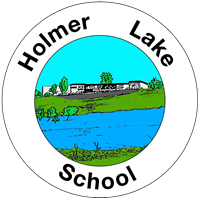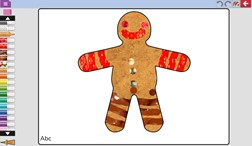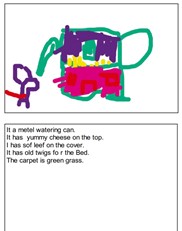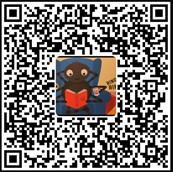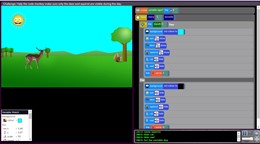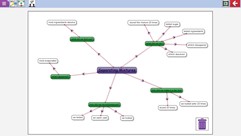Computing
Curriculum Leader - Mrs. Watson and Miss. Baylis
Subject Leader - Mrs. Watson and Miss. Baylis
Link Governor - Vacancy (currently being supported by all governors)
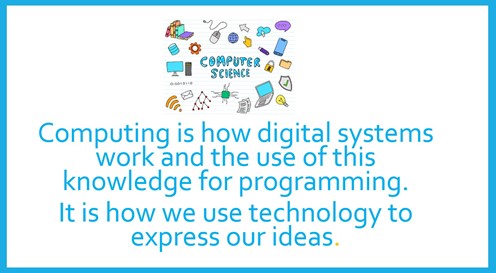
Through our computing curriculum at Holmer Lake, we are preparing our pupils for their future by giving them the opportunities to gain knowledge and develop skills that will equip them for an ever-changing digital world. We strive to provide rich learning experiences that balance all the aspects of computing.
Our curriculum has been carefully designed to ensure a broad, balanced and progressive offer that covers all of the following areas of knowledge.
Computer science
- Algorithms & programming
- Data
- Systems
- Information technology
- Digital artefacts
- Computing contexts
- Digital literacy
- Mechanics
- Searching for & selecting information
- E-safety
The aims for teaching the computing curriculum are for children to:
- be digitally literate, able to express themselves and develop ideas through a range of information and communication technology
- extract, interpret and evaluate information
- apply their skills independently across the curriculum, making thoughtful choices about effective use of technology.
- be equipped with skills and knowledge needed to be successful now and in their future lives.
- learn how to be safe and alert online while also fostering an enthusiasm and keen interest for all that the internet has to offer.
- learn underlying principles and concepts of Computer Science.
- revisit previous learning and systematically build on knowledge and skills so they know more and remember more.
- be offered the full requirements of the National Curriculum for computing.
At Holmer Lake, we use the ‘Teach Computing’ scheme to ensure we provide a broad and balanced curriculum. The curriculum design of a two-year cycle provides children with meaningful examples and repeated encounters in different context. There is a clear progression of knowledge and teaching of key concepts. The key concepts that have been identified are the “golden threads” that are revisited throughout the computing curriculum. The golden threads support children’s ability to make links in their learning, so new knowledge builds on what has been taught before. As they move through the school, they will develop confidence in communicating their knowledge and understanding using specialist vocabulary.
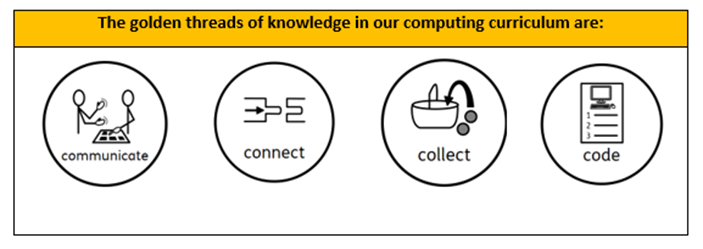
Click here to see the Computing Curriculum Overview
Examples of our Computing End Points.
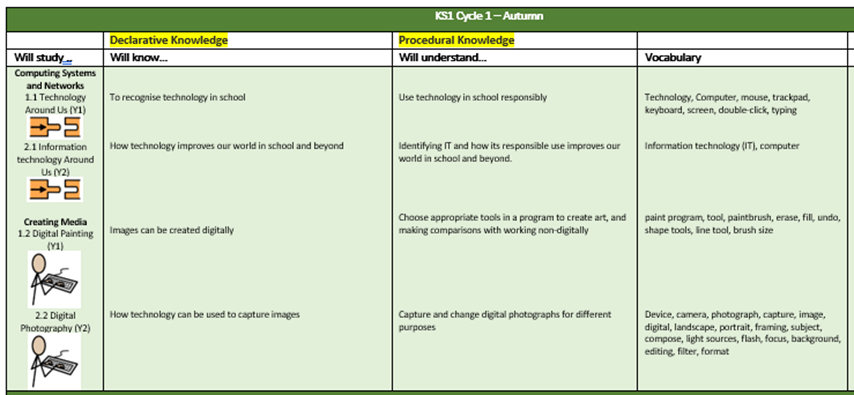

|
|
|
|
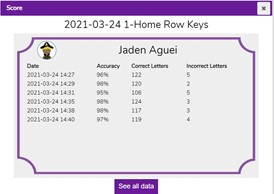 |
|
Reception using 2Paint to create Gingerbread Men. |
Year 1 using 2Publish to produce images and text. |
Year 2 creating stories using Spyder. |
Year 3 developing their touch typing skills using 2Type. |
 |
|
|
|
| Year 3/4 exploring their bodies using AR technology. |
Year 4/5 coding with variables |
Year 5/6 creating Mind Maps using 2Connect |
Year 6 creating text adventures |
Reading
Children are given the opportunity to use research skills using online texts, sometimes given and sometimes found through the use of search engines. Children are taught to be digitally literate, understanding how to extract important information from the texts or websites and deciding if what they are reading can be trusted or not. Reading skills are also developed when working through programming and algorithms.
Writing
Children get the opportunity to use their writing skills in different ways throughout the computing curriculum, this includes note taking in research sessions, writing programs for coding and creating presentations to share their understanding of a concept. Children are also given the opportunity to use technology to present work across the curriculum.
Early Years Foundation Stage.
The ‘Golden Threads’ are established in reception with children getting the opportunity to explore a range of technology.
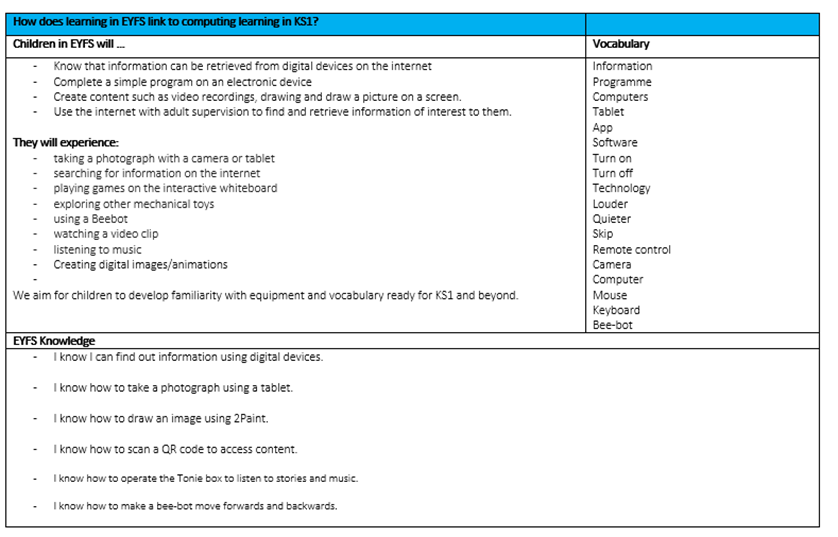
SMSC and British Values
We use computing to support our children’s spiritual development by helping them to develop deep thinking and question the way in which the computing world works. Moral development is supported through discussion about computing understanding and challenging assumptions, supporting children to question information and data that they are presented with. Collaborative learning is encouraged in the form of listening and learning from each other and paired discussion and working with partners. Children develop an understanding that people can express different views on the internet and to be considerate of this. They are also made aware that there are rules around computing and that these rules are to keep themselves and others safe. Children are taught how to use our right to freedom of speech in a respectable and thoughtful way, being considerate of how this speech will affect others. In computing we understand that we are connected to people across the whole world. We understand that these are people from different communities, cultures, faiths, and beliefs.
Inclusion
At Holmer Lake Primary School we actively seek to remove the barriers to learning and participation that can hinder or exclude individual or groups of pupils. All children benefit from quality first teaching in the classroom where teachers set high expectations, cater for the needs of individuals, and provide opportunities for all pupils to achieve and progress. Teachers are aware that pupils bring different experiences, interests, and strengths to school which influence the way they learn. Teachers plan and adapt their approaches to teaching and learning so that all pupils can take part in lessons fully and effectively. For example, in computing teachers will sometimes decide, that in order to best support a child who requires further support, mixed ability pairs or groupings give the children peer support and allow for discussion between the children.
Curriculum Drivers
The computing curriculum provides opportunities for children to develop their Wellness by expanding their understanding of the digital world and keeping themselves safe online. Learning about how people use computing in the wider world and in their jobs allows children to develop aspirations for their own future Work. They gain an understand of how digital technology allows us to connect with the World.

